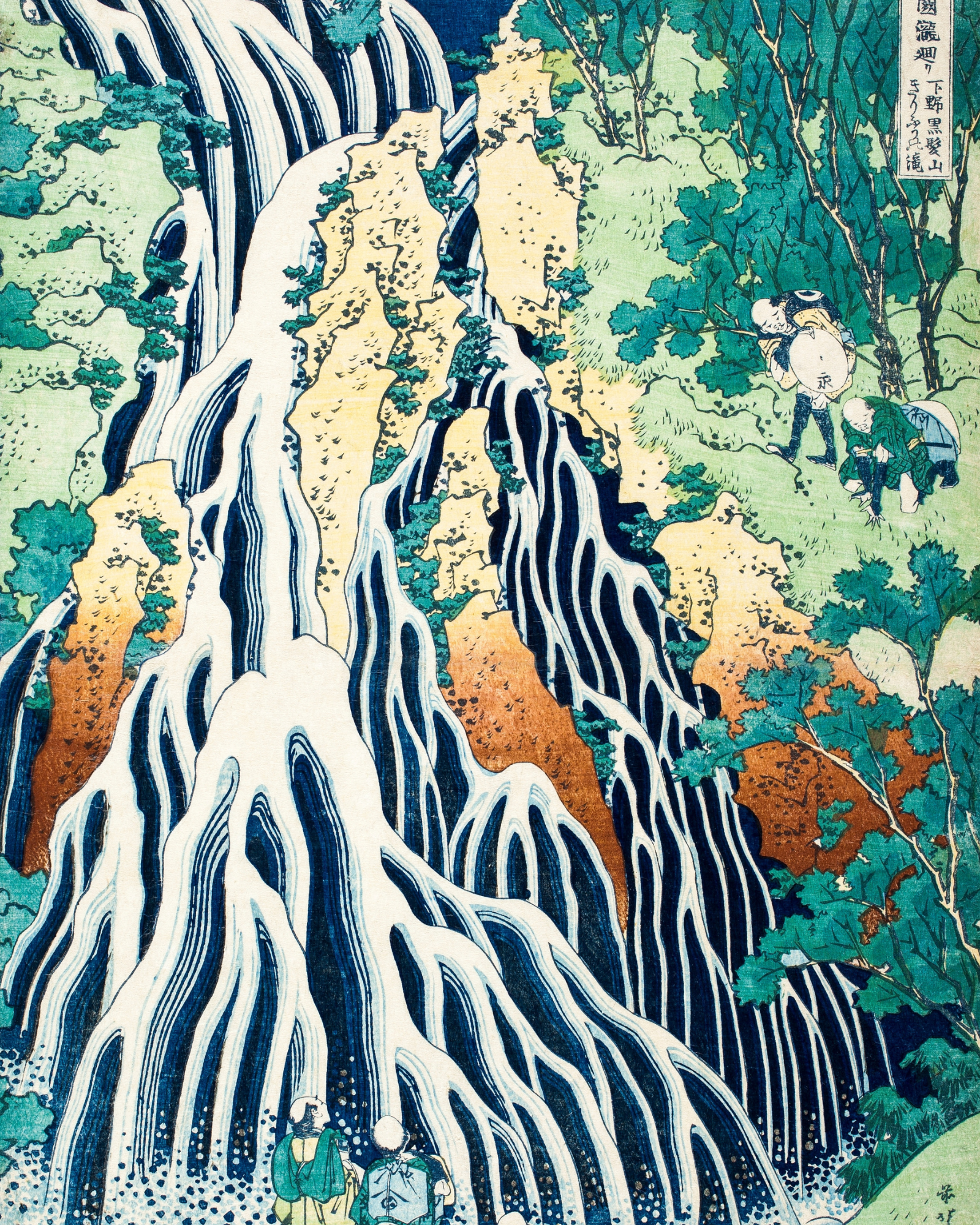Utagawa Kuniyoshi: The Dynamic Storyteller of Japanese Art

Utagawa Kuniyoshi (1797–1861) is celebrated as one of the most imaginative and versatile artists of Japan’s Edo period. Renowned for his dramatic ukiyo-e (woodblock prints), Kuniyoshi’s work spans a variety of themes, from mythical heroes and fierce warriors to surreal landscapes and humorous scenes. His bold compositions and vivid storytelling set him apart, earning him a lasting legacy as a master of Japanese art.
The Life and Artistic Journey of Utagawa Kuniyoshi
Born as Yoshisaburō in Edo (modern-day Tokyo), Kuniyoshi displayed a talent for drawing from an early age. He joined the Utagawa school under the tutelage of Utagawa Toyokuni, where he adopted the name Kuniyoshi. Early in his career, Kuniyoshi struggled to find success, but his fortunes changed with his groundbreaking series The 108 Heroes of the Water Margin (Suikoden). This work established him as a master of heroic and dramatic prints.
Kuniyoshi’s career coincided with a time of significant social and political change in Japan. Despite the restrictive censorship laws of the Tenpō Reforms, which limited artistic expression, Kuniyoshi found creative ways to infuse his works with satire, subversion, and individuality.
Kuniyoshi’s Unique Style and Techniques
Kuniyoshi’s art is characterized by its bold lines, dynamic compositions, and vivid use of color. His versatility allowed him to excel across a wide range of themes and styles.
Dynamic Compositions: Kuniyoshi was a master of creating movement and drama. His prints often depict action-packed scenes, such as samurai locked in combat or mythical beasts in mid-leap, immersing viewers in the intensity of the moment.
Detailed Imagery: Kuniyoshi’s works are renowned for their meticulous detail, from the intricate patterns of armor and clothing to the expressive faces of his characters. This attention to detail enhances the realism and emotional impact of his art.
Creative Perspectives: Kuniyoshi often used unconventional perspectives and cropping, creating a sense of depth and energy. His innovative approach influenced later Japanese artists and even Western Impressionists.
Themes in Kuniyoshi’s Art
Heroic Tales and Legends: Kuniyoshi is best known for his depictions of legendary figures, such as the warriors of Suikoden. These prints celebrate bravery, loyalty, and honor, often portraying larger-than-life characters in dynamic poses.
Mythology and Supernatural: Kuniyoshi’s imagination shone in his portrayals of mythical creatures, spirits, and fantastical landscapes. His series Strange Tales of the Crescent Moon explores eerie and otherworldly themes, captivating viewers with its surreal imagery.
Satire and Humor: Despite his reputation for dramatic art, Kuniyoshi had a playful side. He created satirical prints that poked fun at societal norms, often using animals or caricatures to convey his messages subtly.
Landscapes and Daily Life: While less known for landscapes than his contemporary Hiroshige, Kuniyoshi also created striking depictions of natural scenery and urban life. His works often include elements of fantasy or humor, showcasing his unique perspective.
Notable Works
The 108 Heroes of the Water Margin: This iconic series is based on a Chinese classic and features bold, dramatic portraits of outlaw heroes. The dynamic poses, intricate costumes, and vibrant colors make it one of Kuniyoshi’s most celebrated achievements.
Takiyasha the Witch and the Skeleton Specter: This haunting print depicts the sorceress Takiyasha summoning a giant skeleton to confront her enemies. The dramatic composition and eerie atmosphere highlight Kuniyoshi’s flair for the supernatural.
Cats Suggested as the Fifty-Three Stations of the Tōkaidō: A humorous take on Hiroshige’s famous series, this work replaces human travelers with playful cats, showcasing Kuniyoshi’s wit and love for the animals.
Global Recognition and Influence
Kuniyoshi’s art gained international recognition in the late 19th and early 20th centuries, influencing European artists like Vincent van Gogh, Claude Monet, and Henri de Toulouse-Lautrec. His dynamic compositions and bold use of color had a profound impact on Western art, particularly the Art Nouveau and Impressionist movements.
Today, Kuniyoshi’s works are celebrated worldwide and displayed in prestigious museums such as the British Museum, the Museum of Fine Arts in Boston, and the Tokyo National Museum.
Legacy and Impact
Utagawa Kuniyoshi’s contributions to ukiyo-e extended far beyond traditional boundaries. His innovative approach to storytelling, composition, and humor redefined the genre and inspired future generations of artists.
Kuniyoshi’s ability to balance drama with playfulness, and tradition with innovation, makes his art timeless. His works continue to captivate audiences with their energy, creativity, and emotional depth.
Utagawa Kuniyoshi was more than an artist—he was a visionary who brought stories to life with unparalleled intensity and imagination. His bold, dynamic prints celebrate the heroism, humor, and mystery of Japanese culture while pushing the boundaries of traditional art.
Kuniyoshi’s legacy endures as a testament to the power of creativity and the timeless appeal of great storytelling. Through his art, he invites us into a world of adventure, wonder, and boundless imagination.